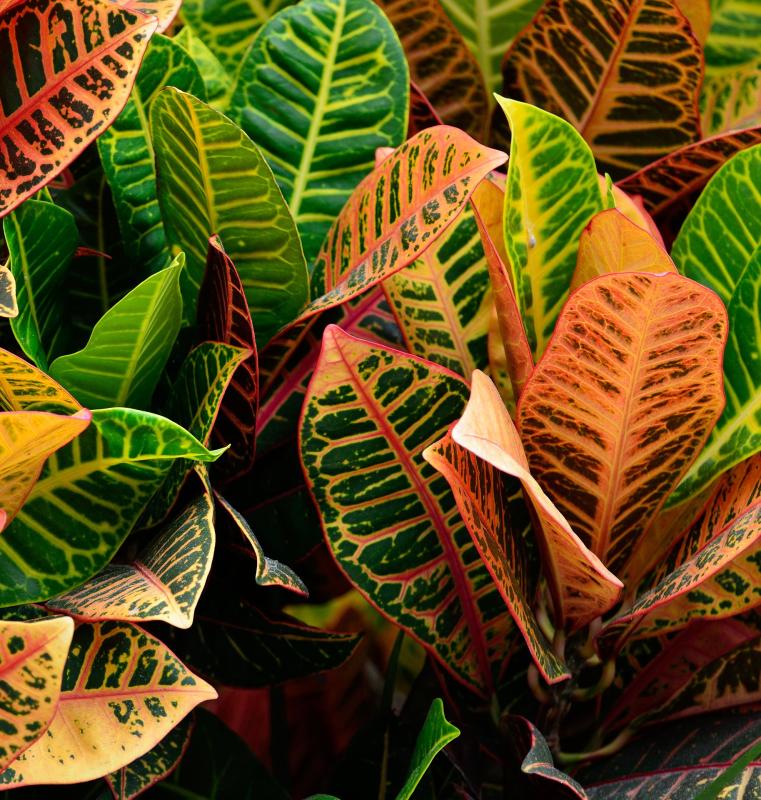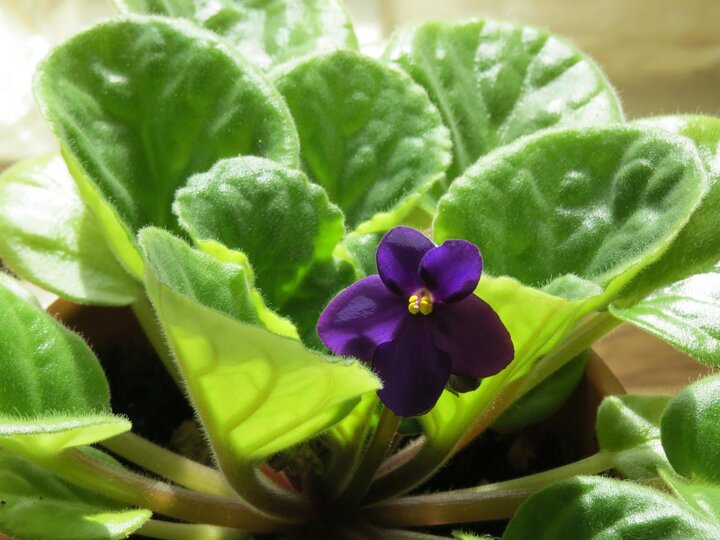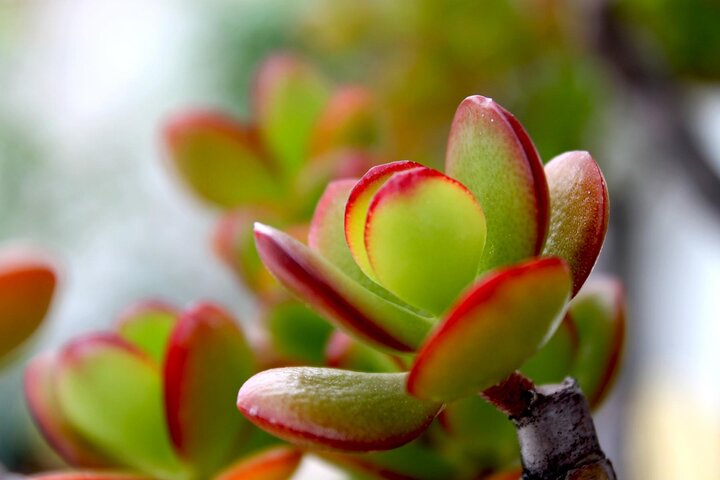Sarah Browning, Nebraska Extension Educator

Plants with high light requirements, like this croton, are often dormant during winter and do not need fertilization. Image by Pixabay
As with overwatering, over fertilization is a common problem, so an important step in winter houseplant care is understanding whether your plant needs fertilization.
Houseplants, like most other plants, need fertilizer containing three major plant nutrients: nitrogen (N), phosphorus (P) and potassium (K). The amount and frequency of fertilizer required depends on the type of plant, it’s growth rate, available light, soil media mix, frequency of watering and the type of fertilizer.
During winter, with its short days and low light conditions, some plants rest producing little new growth and need little, if any, fertilization during this period. However, if you have a very brightly lit south or west window, or have provided your plant with supplement light, it may still be actively growing even in winter. In that case, treat it as an actively growing plant. Newly repotted, unrooted, dormant and wilted plants should not be fertilized.
How do you determine if your plant is actively growing? Look for new leaves being produced, flower buds or flowers. These all indicate the plant is still active and not resting (dormant).

Next, determine if the potting soil you used already contains slow-release fertilizer. If so, refer to the package guidelines for when additional fertilizer should be added. For example, one common potting soil states it feeds plants for up to six months. In that case, additional fertilizer would not be needed any earlier.
Commercial fertilizers for houseplants can be purchased in granular, crystalline, liquid or tablet forms. Both quick release water-soluble and slow-release products are available. Each should be used according to label instructions regarding frequency of application and dilution.
If you are using a quick release water-soluble product, actively growing plants should be fertilized every two months. You’ll apply fertilizer less often if you are using a slow-release product.
Do not fertilize dormant plants since this could cause a harmful buildup of fertilizer salts in the soil.

Soluble salts are minerals dissolved in water. Fertilizer dissolved in water becomes a soluble salt. When water evaporates from the soil, minerals or salts stay behind. As soil salt concentration rises, plants find it harder and harder to take up water even if the soil is moist. If salt levels are extremely high, water will move out of plant root tips – being pulled into the soil water solution by the high salt level – causing root tips to dry out and die, resulting in the symptoms listed above.
High levels of soil salts damage roots directly and because it is weakened the plant becomes more susceptible to attack from insects and diseases. One of the most common problems associated with high salt levels is root rot.

Repotting with new soil is one way to eliminate excess salt in the soil.
Another method is periodic leaching with a large amount of water to flush excess salt out of the soil. As a standard practice, houseplants should be leached every 4 to 6 months. The amount of water needed is twice the volume of the pot. For example, a 6-inch pot holds about 5 cups of water, so 10 cups would be used to leach the pot. If a layer of salts has formed on the soil surface, remove the crust before beginning to leach, but there's no need to remove more than ¼ inch of soil.
To begin the leaching process, put your plant in the bathtub or deep sink where water can drain freely. Pour water onto the soil, a little at a time, until water starts to come out the bottom drain holes. Don’t apply water so quickly you wash soil away from the plant crown; just pour in as much as the container will allow and repeat the procedure until all the water is used. Using more than the recommended amount of water will not hurt the plant, but don’t use less. Allow all the leachate water to drain away in the sink.
After leaching, you won’t need to water the plant for quite a while. Allow the soil to dry down to normal dryness levels before watering again.
Images from Pixabay
- Flowers are an indication a plant, like this African violet, are actively growing.
- Christmas cactus normally bloom in winter and need fertilization to grow and flower well.
- Jade plants, Crassula argentea, typically do not grow actively in winter due to low light. But this plant is receiving enough light to still be actively growing, as seen by the reddish leaf margins.